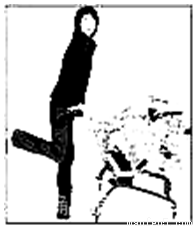题目内容
A well dressed man went into a jewelry(珠宝) shop one day. He ______ that he wished to buy a pearl (珍珠) for his wife's birthday. The ______ didn't matter, for he was rich.
After examining a number of beautiful and ______ pearls, he chose an unusual black one. It would cost ______. He paid, took the black and left.
A few days later, the man ______ and said that his wife liked the pearl ______ much that she wanted another one just like this. It ______ be exactly the same size and quality(质量)______ she wanted to have a ______ of earrings(耳环). The jeweler seemed ______. Then the man suggested that the jeweler advertise in the newspaper to offer $ 25,000 ______ such a pearl. So the jeweler did.
Many people came to him to sell their pearls but nobody ______ a pearl which was the right size and quality. Just when the jeweler had given up, a little old lady came into his ______. She took out such a ______ pearl from her pocket.
"I don't want to ______ my pearl," she said sadly, "It was given to me by my mother, who had received it from her ______ mother. But I really need the ______."
The jeweler was very ______ and quickly paid for the pearl. Then he telephoned the ______ to tell him the good news. ______, the man could never be found again.
1.A. knew B. cried C. explained D. suggested
2.A. colour B. price C. design D. quality
3.A. expensive B. cheap C. quick D. delicious
4.A. 5,000 dollars B. 5,000 francs C. 5,000 pounds D. 5,000 yuan
5.A. arrived B. went C. came D. returned
6.A. very B. such C. so D. too
7.A. could B. might C. would D. must
8.A. because B. or C. while D. though
9.A. lot B. pair C. number D. box
10.A. useless B. careless C. helpless D. homeless
11.A. of B. for C. with D. in
12.A. bought B. lost C. had D. wanted
13.A. house B. room C. office D. shop
14.A. black B. white C. red D. yellow
15.A. buy B. sell C. miss D. refuse
16.A. true B. poor C. old D. own
17.A. money B. price C. colour D. quality
18.A. sad B. glad C. sorry D. surprised
19.A. friend B. old lady C. rich man D. rich woman
20.A. Although B. Therefore C. Otherwise D. However



 ome back.
ome back.